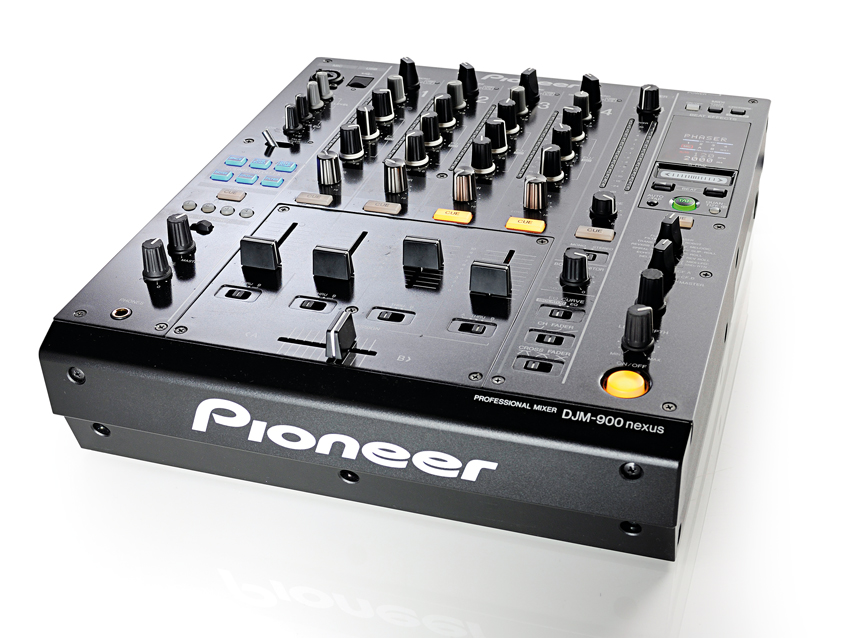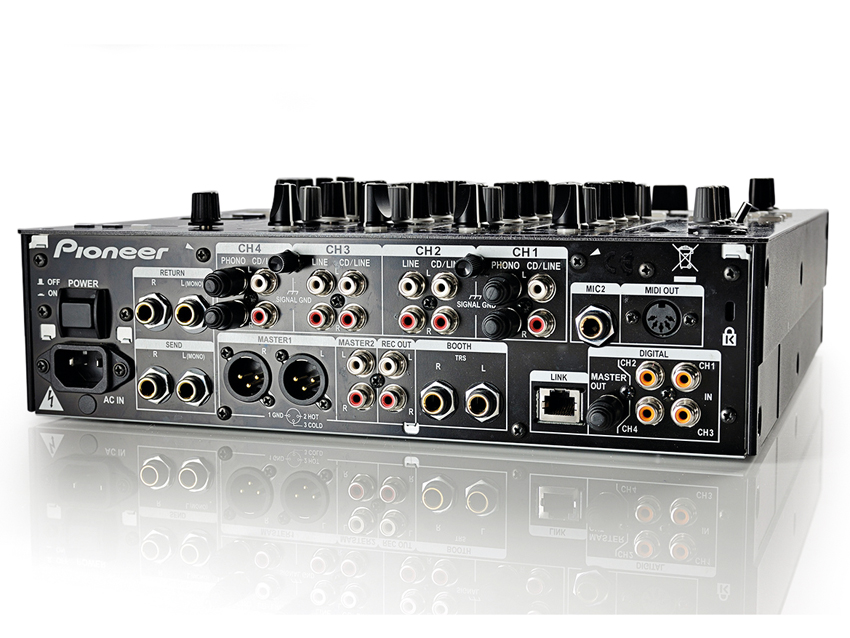MusicRadar Verdict
Easy to use and packed full of futureproof features. A perfect balance in the DJ booth.
Pros
- +
Pro DJ link LAN port. Brand new colour effects. X-Pad touch control for beat effects.
Cons
- -
Firmware updating can be a hassle.
MusicRadar's got your back

Pioneer DJM-900 Nexus

Pioneer DJM-900 Nexus
When Pioneer launched its flagship DJM-2000 mixer, it seemed to be the perfect compliment to its top-of-the-line CDJs, offering masses of connectivity, effects and control.
But, it also seemed to be a mixer that split the DJ community and was too much of a leap forward from what had become the club standard, the DJM-800.
"Combining the colour effects with the beat effects meant I was constantly discovering new tricks."
We loved the DJM-2000 and its overflowing amount of features, but it didn't find its way in to the hearts of as many DJs and clubs as Pioneer probably hoped. Here then is where their new DJM-900 Nexus steps in.
Built in a similar shell to the DJM-800, the Nexus packs in some of the same behind-the-scenes brains as the DJM-2000, with Pro link Ethernet support and a full audio interface and USB connection.
Although the 900 only sports a single Ethernet port, using a LAN hub multiple CDJ-2000s can be connected and will make sure any tempo grid information from Pioneer's Rekordbox software is also read perfectly by the mixer, keeping all the effects in sync with the CDJ's tempo.
For example, adjust the pitch of the CDJ and providing the quantise button on the Nexus is enabled, the tempo information on the mixer's screen will change with it, all perfectly in time.
Effect tricks
The whole mixer is packed with these small, but important improvements and additions. While remaining very familiar in layout and feel, inside it's worlds away from the beloved DJM-800.
There's new colour effects too, bringing the new total from four to six including a noise oscillator, reverb, dub echo and a gate/comp effect.
First up is the noise oscillator, the brilliance of which comes from the ability to assign it to a separate channel (even if it's not playing back audio) and have the option for sweeps and build effects at your leisure.
While the space effect creates its own version of the dramatic build and pause to huge effect, with gorgeously glossy reverb tails continuing long after the signal is cut, if desired.
The dub echo is reminiscent of an old tape delay effect with timing controls of the speed of the delay while the gate/comp effects mimic a hard-sidechained gate and is fantastic for tightening up mixes when blending a particularly chaotic or overly percussive outro with a minimal intro.
The right of the mixer also sports beat effects with Reverb, Spiral, Slip Roll, Melodic and MIDI LFO all new additions. Spiral is probably the most interesting of these, being a type of pitched delay.
Meanwhile Melodic lets you snatch a beat of audio and then transpose that samples' pitch like you would if you were playing it over a keyboard - fantastically creative when playing with acapellas or sparse musical moments. Possibly the most exciting feature of all these effects is the new ability to control them using the touch sensitive X-Pad.
The X-Pad
This simple but effective touch-strip enables single finger control and triggering of effects. Slide your finger to the left to increase the rapidity of rolls or the speed of a flanger and so on.
This makes ultra fast triggering a breeze and clever trills and fills feel natural and tight and it's not long before you become accustomed to it. It also enables dual control of LFOs when using the Filter, Phase and Flanger sweeps.
The usual beat button and rotary dial controls one of the LFOs while a second LFO's speed can be controlled via the X-Pad. Wobbly!
Future proof
Another development of the DJM-900 Nexus is the Traktor certification, enabling access to all four decks using the built in 24-bit/96kHZ interface in Traktor, all via a single USB cable.
There's also timecode compatibility, meaning DJs no longer need to take their timecode interface to use Traktor Scratch with timecode CDs or vinyl.
EQ has also been tweaked with the usual -26dB cuts now also selectable as an isolator EQ similar to the one on the DJM-1000 mixers, so complete kills can be enabled on all three bands when turned fully anti-clockwise.
At the time of writing, Pioneer also updated the Firmware of the DJM-900, which is something that is going to get some getting used to. It adds extended tweaks to the effects section, but more importantly the update proved that the life of this mixer should be substantial with Pioneer responding to updates, tweaks and suggestions in the same way it has with the CDJ-2000 and it is a mixer that can be grown into by CD jocks and laptop jocks alike.
Although, it's a bit of a pain having to upgrade the firmware every now and again - especially as it's done via LAN cable. Let's just hope that clubs and venues keep the firmware up to date, because unlike the CDJ-2000, it's not something that can always be done before your set.
There are plenty of things that we'd like to have seen on the mixer. We've always thought that individual effect mute buttons next to the colour FX rotaries would be useful as would simple EQ or tone controls on the booth monitor and headphone outputs, but this certainly wouldn't deter us from making this our mixer of choice.
Nexus episode
The DJM-900 Nexus is without a shadow of a doubt a brilliant mixer and is designed in such a way that most of its power is disguised behind a friendly and familiar interface, which is quick to learn.
Dig deeper and combine the CDJ-2000s Pro DJ Link integration and you have an exceptionally creative, mix environment.
The attention to detail on the effects and what is actually required by most DJs is outstanding. Combining the colour effects with the beat effects meant we were constantly discovering new tricks and tweaks when mixing.
The USB connection made integration with Traktor extremely simple. Aside from all the creative improvements, this mixer also sounds better than the DJM-800 and has all the same pristine imaging as the flagship DJM- 2000 mixer.
It's fair to say there are more advanced mixers in this price range and there'll always be mixers that suit specific DJ needs, but Pioneer's replacement for their omnipresent DJM-800 will undoubtedly be on the majority of tech riders before the end of 2011.
Future Music is the number one magazine for today's producers. Packed with technique and technology we'll help you make great new music. All-access artist interviews, in-depth gear reviews, essential production tutorials and much more. Every marvellous monthly edition features reliable reviews of the latest and greatest hardware and software technology and techniques, unparalleled advice, in-depth interviews, sensational free samples and so much more to improve the experience and outcome of your music-making.
“I feel like that song had everything we needed to come back with”: Bring Me The Horizon’s Lee Malia on Shadow Moses, its riff and the secrets behind its tone, and why it was the right anthem at the right time
“I said, ‘Are we sure we can write a song about death?’”: The story of Mike + The Mechanics' classic No.1 The Living Years
“Without investment in music education our talent pipeline is at risk of drying up along with the huge opportunities for economic growth it brings”: UK Music draws up five point plan to “turbocharge” music education










